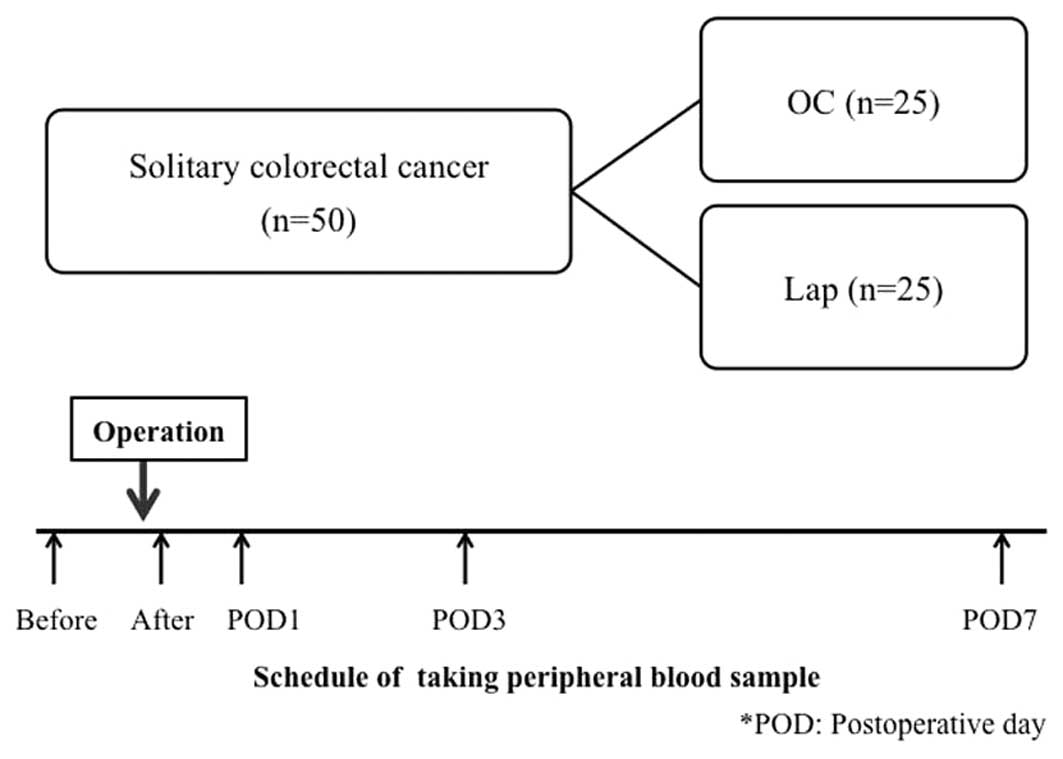Investigation of free cancer cells in peripheral blood using CEA mRNA expression in perioperative colorectal cancer patients
- Authors:
- Published online on: April 29, 2013 https://doi.org/10.3892/mco.2013.109
- Pages: 668-674
Metrics:
Total
Views: 0 (Spandidos Publications: | PMC Statistics:
)
Total PDF Downloads: 0 (Spandidos Publications: | PMC Statistics:
)
Abstract
The aim of this study was to evaluate the impact of laparoscopic surgery (Lap) on circulating free tumor cells in colorectal cancer patients. In this study, we selected carcinoembryonic antigen (CEA) mRNA expression in peripheral blood as the marker of the circulating tumor cells and compared this marker between Lap and open colectomy (OC), to investigate differences due to surgical approach. A total of 50 patients underwent curative surgery for solitary colorectal cancer at our department, between June, 2008 and February, 2011. The patients were divided into OC and Lap groups (25 patients each). Total RNA was extracted subsequent to peripheral blood collection prior to surgery, immediately following surgery and 1, 3 and 7 days after surgery. CEA mRNA was detected with reverse transcription polymerase chain reaction (RT‑PCR) and the association between peripheral blood CEA mRNA‑positive rate, surgical findings and clinicopathological characteristics was investigated. The peripheral blood CEA mRNA‑positive rate was significantly increased immediately after surgery, compared to the preoperative rate (P=0.001), but decreased over time. No significant differences were observed at any blood‑sampling time point after postoperative day 1. The positive rate was significantly increased in the OC group immediately after surgery, compared to the preoperative rate (P=0.004). However, there were no significant differences between the rates prior to and immediately after surgery in the Lap group. The patients were then divided into those who were peripheral blood CEA mRNA‑positive and ‑negative after surgery (postoperative positive and negative groups, respectively) and the clinicopathological characteristics were compared. Significant differences were identified between the groups in lower rectal cancer patients and patients with a large intraoperative blood loss (P=0.001 and P=0.01, respectively). In conclusion, in colorectal cancer patients, there were no significant differences in the perioperative peripheral blood CEA mRNA‑positive rate or its short‑term changes between patients undergoing OC and Lap surgery. It was suggested that Lap is equivalent to OC with regard to free cancer cells.
















